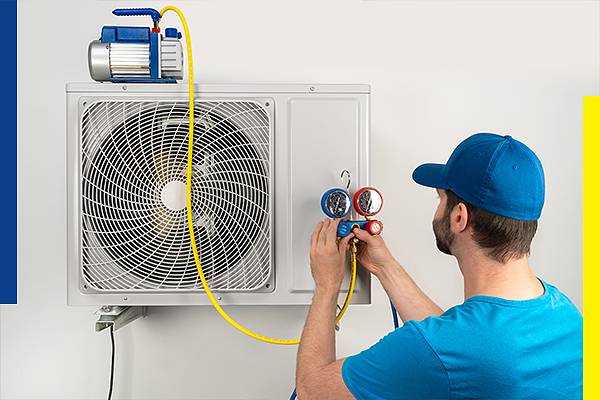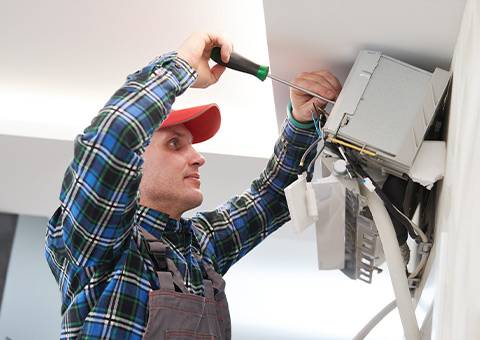
Summer’s here, and with it comes sunshine, vacations, and…dreaded air conditioning bills. Let’s face it: staying cool can get expensive quickly. But fear not, budget-conscious beach bums! This post unveils the one temperature setting that can be your secret weapon against skyrocketing energy costs. We’ll also explore additional tips and tricks to keep your cool without draining your wallet. Get ready to enjoy a comfortable summer without breaking the bank!
The Ideal Temperature for Summer Comfort and Savings
When it comes to setting your air conditioner during the summer, the goal is to find that sweet spot where comfort and energy efficiency meet. Energy experts, including those from the U.S. Department of Energy, recommend setting your thermostat to 78°F (26°C) when you’re at home and awake. This temperature is considered optimal for balancing indoor comfort with energy savings.
Why 78°F?
- Energy Efficiency: At 78°F, air conditioners can operate more efficiently, using less energy to maintain a comfortable indoor temperature. This efficiency translates into lower energy bills, saving homeowners money over the course of the summer.
- Comfort: While individual preferences vary, 78°F is generally comfortable for most people, especially when combined with proper humidity control and air circulation.
The Impact on Savings
Following this guideline can lead to substantial savings on your energy bills. According to the U.S. Department of Energy, you can save up to 10% a year on heating and cooling by simply turning your thermostat back 7°-10°F for 8 hours a day from its normal setting. While the exact savings will depend on your specific circumstances, such as the size of your home and the efficiency of your HVAC system, the potential for cost reduction is significant.
By adhering to the recommended setting of 78°F during the summer months, you’re not only ensuring a comfortable living environment but also contributing to a more sustainable and cost-effective household. ⚠️ Remember, every degree of extra cooling will increase energy consumption by 6% to 8%, so it’s crucial to find a balance that works for you and your family.
Understanding the Science Behind the Temperature Setting
To appreciate why 78°F is often recommended as the ideal air conditioning setting in summer, it’s helpful to delve into the science of air conditioning and human comfort. This understanding can empower you to make informed decisions about your home’s cooling strategy, ultimately leading to enhanced comfort and energy efficiency.
Thermodynamics of Air Conditioning
Air conditioners work by removing heat and humidity from indoor air. The process is governed by principles of thermodynamics, which dictate how heat moves from warmer to cooler spaces. The closer the indoor temperature is to the outdoor temperature, the less energy your air conditioner needs to expend in transferring heat outside; setting your thermostat to 78°F strikes a balance between minimizing the difference in temperature between the indoors and outdoors and maintaining indoor comfort.
The Body’s Response to Heat
Human comfort in indoor environments is influenced not just by air temperature but also by factors such as humidity, airflow, and personal preferences. Our bodies naturally cool down through perspiration and the evaporation of sweat. However, high humidity levels can impede this process, making the air feel warmer than it actually is. A setting of 78°F, combined with effective humidity control, helps create conditions that support the body’s natural cooling mechanisms.
Energy Consumption and Efficiency
The energy consumption of an air conditioner increases with the demand placed on it to cool the space. By setting the thermostat closer to the outdoor temperature, the cooling load is reduced, meaning the air conditioner consumes less energy. This efficiency not only lowers your energy bills but also reduces wear and tear on the HVAC system, potentially extending its lifespan.
The Science Behind the Temperature Setting
Setting your air conditioner to the optimal temperature for both comfort and savings is more than just a number; it’s about understanding the science that makes 78°F the recommended setting. Here’s a closer look at the thermodynamics of air conditioning and how the human body responds to heat, which together justify this guideline.
Thermodynamics of Air Conditioning
- Energy Consumption vs. Output: Air conditioners work by removing heat from indoor air and releasing it outdoors. The closer the indoor temperature setting is to the outdoor temperature, the less energy the air conditioner needs to use to maintain that temperature difference. At 78°F, the system can operate efficiently, reducing the amount of energy consumed without compromising on cooling effectiveness.
- Dehumidification: Part of what makes the air feel hot is humidity. Air conditioners also dehumidify the air, which helps make the indoor environment feel cooler. The recommended setting takes into account not just the temperature but also the relative humidity inside your home, providing a comfortable climate without excessive energy use.
Human Body Response to Heat
- Adaptation and Comfort: The human body is capable of adapting to a range of temperatures, and comfort can vary widely among individuals. However, the recommended setting is based on general comfort levels for the average person in a moderately humid environment. It’s a compromise between being cool enough to reduce perspiration and warm enough to avoid the chill of an overly air-conditioned room.
- Health Considerations: Overly cold temperatures can be just as harmful as excessive heat, leading to discomfort and health issues such as colds or muscle strain. The optimal temperature setting is intended to provide a healthy, comfortable living environment for most people.
Practical Application
Understanding these principles can help you make informed decisions about your air conditioning settings. It encourages a more energy-conscious approach to cooling your home, where comfort does not have to come at the expense of higher energy bills. By embracing the science behind the recommended temperature setting, you can enjoy a comfortable, cost-effective, and energy-efficient home during the summer months.
Tips for Maintaining Comfort at the Optimal Temperature Setting

Adhering to the recommended temperature of 78°F in summer ensures energy efficiency, but comfort at this temperature can sometimes require additional strategies, especially on the hottest days. Here are some practical tips to help maintain comfort without straying from this optimal setting.
Utilize Ceiling Fans
- Enhanced Air Circulation: Ceiling fans can make a room feel cooler than it actually is by moving air around and over the skin, increasing the evaporation of sweat and reducing the perceived temperature by up to 4°F. This means you can feel comfortable even when the thermostat is set at a higher temperature.
- Direction Matters: In summer, make sure your ceiling fans are set to rotate counterclockwise to push cool air down to the floor. This creates a gentle breeze that contributes to a more comfortable environment.
Manage Sunlight and Heat Gain
- Keep Blinds Closed: Sunlight can significantly increase the temperature inside your home. By keeping blinds or curtains closed during the day, especially on windows facing south and west, you can reduce heat gain and help maintain cooler indoor temperatures.
- Use Thermal Curtains: Investing in thermal curtains can further insulate your windows, preventing cool air from escaping and heat from entering.
Ensure Proper Insulation
- Seal Leaks: Check windows, doors, and other areas for leaks and seal them to prevent cool air from escaping. Proper insulation is key to maintaining consistent indoor temperatures.
- Attic Insulation: Adding insulation to your attic can prevent heat from penetrating your living spaces, making it easier to maintain your desired temperature without overworking your AC.
Regular Maintenance of Your HVAC System
- Filter Changes: Regularly changing or cleaning your air conditioner’s filter can improve its efficiency and the quality of air in your home.
- Professional Check-ups: Annual maintenance checks by professionals can ensure your system is running efficiently. This includes checking refrigerant levels, cleaning coils, and ensuring all components are in good working order.
By implementing these tips, you can enjoy a comfortable home environment at the optimal temperature setting throughout the summer without incurring unnecessary energy costs. Remember, small adjustments can lead to significant savings and a more sustainable lifestyle.
Maximizing Savings Beyond the Thermostat
While setting your air conditioner to the optimal temperature is crucial for energy savings during the summer, there are additional strategies you can employ to further reduce your energy bills and enhance your comfort. These methods extend beyond simple thermostat adjustments, involving a holistic approach to your home’s energy consumption.
Regular Maintenance Checks
- Efficiency and Longevity: Regularly scheduled maintenance checks ensure that your HVAC system is running as efficiently as possible. These checks can identify issues like air leaks, duct blockages, or inefficient components that may be increasing your energy consumption.
- Professional Servicing: We recommend having a professional technician service your air conditioning system at least once a year. This not only helps maintain its efficiency but also prolongs the system’s lifespan, ensuring that you get the most out of your investment.

Upgrading to Energy-Efficient Models
- Invest in Modern HVAC Systems: If your air conditioning unit is old, it might be time to consider an upgrade. Modern HVAC systems are designed with energy efficiency in mind and can significantly reduce your energy consumption compared to older models.
- Look for ENERGY STAR® Ratings: When selecting a new air conditioner, look for units with the ENERGY STAR® label. These products meet strict energy efficiency guidelines set by the U.S. Environmental Protection Agency and can save you money on your energy bills.
Considering Programmable Thermostats
- Automated Temperature Control: Programmable thermostats allow you to set your air conditioning to automatically adjust to different temperatures throughout the day. For instance, you can set your AC to a higher temperature when you’re not home and cool down your house just before you return.
- Smart Thermostats: For even more convenience and efficiency, consider investing in a smart thermostat. These devices can learn your schedule and preferences and adjust your home’s temperature settings accordingly. Many can also be controlled remotely via a smartphone app, giving you the flexibility to adjust your home’s climate on the go.

Optimizing Home Layout and Design
- Strategic Ventilation: Ensure that your home’s ventilation is optimized to enhance natural airflow, which can help keep your home cool without excessive AC use.
- Use of Reflective and Insulating Materials: Consider using reflective roofing materials or paint to reflect more sunlight away from your home. Adding insulation to walls, ceilings, and floors can also help keep the cool air inside during the summer.
By combining these strategies with the optimal thermostat setting, you can create a more energy-efficient home that remains comfortable throughout the summer months while keeping your energy costs low. These approaches contribute to a sustainable lifestyle and demonstrate a commitment to environmental stewardship.
Stay Cool and Save Big This Summer! ☀️💰
Make the smart choice for a comfortable and cost-effective home this season! Embrace the optimal temperature setting and explore energy-saving strategies with Blue Air One Heating & Air Conditioning. Let’s ensure your summer is filled with cool breezes and savings. 🌬️💵 Ready to optimize your comfort? Contact us today for expert advice and services!



